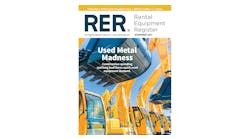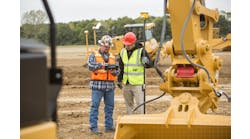It doesn't take a rocket scientist to see that the current business environment is not quite what it was the past few years. In preparation for this issue, we spoke with dozens of rental people around the country and while many see clear sailing ahead and haven't really been hurt by the housing slowdown, the consensus is still that conditions are not as robust as they were in 2004-2006. This shouldn't come as a big surprise. The past few years have been a “perfect storm” in a positive sense for most rental companies and we all know boom periods don't last forever.
The housing slowdown is affecting some rental companies. For the most part, those involved in earthmoving equipment are affected most, particularly in regions where the housing booms had been strongest. Nonresidential construction in most areas of North America remains solid but commercial construction tends to be affected by housing trends later on. When subdivisions are being built, strip malls, retail centers, schools, roads and other building follows. When housing slumps, the reverse occurs.
The sub-prime lending market has taken a big hit and economists aren't sure how deep the iceberg is, how long the slump will last or what the entire impact will be. The consensus among most rental people, when we asked them about their customers' outlook, is still, by and large, positive. It's still a healthy economy and customers remain busy. But their backlog isn't as long, and their long-term outlook not as bullish as it was a year or even six months ago.
What this really means for executives of rental companies is that now their management skills will be tested and they'll find out if their systems and metrics are effective. The old saying that it's easy to make money in boom times is absolutely true and how they fare when the road gets rocky will illustrate how solid their business structure really is.
As early as last year, most people I talked to expected the rate of growth to slow down in 2007. What has concerned people most is too much fleet expansion leading to the same kind of situation we saw at the beginning of this decade, with a glut of machines chasing too few jobs, and significant rate-cutting that severely challenged profitability. Already I've heard rumblings of this occurring in some markets. I don't sense that companies over-fleeted to the same degree this time around, but inevitably lower utilization will lead to a glut of machines in some markets, larger companies transferring fleet to stronger markets, and a downward pressure on rates. Most rental people are reporting they have yet to see large-scale “dumping” of equipment onto the used markets or auctions, or massive attempts at trade-back deals with manufacturers. But these are trends that could develop in the next six to 12 months if the softening is worse than expected.
The last thing I want to do is contribute to panic or a widespread impression that doom is on the horizon so sell off your assets fast! One of the interesting characteristics of the current rental environment is its spottiness: in other words one area might be softening, but in another area not far away activity remains very strong. You can judge your market trends far better than I or anybody else can. That's why the ability to truly manage your business will be more important than ever in the months to come.
Shortly before this issue went to press we learned that Ingersoll Rand Co. agreed to sell Bobcat along with its utility equipment and attachments divisions to Doosan Infracore. I'm sure many of you have already read about this in our RER Reports newsletter or website at www.rerreports.com or other sources, and we'll have more information about it in upcoming issues.
I'm sorry to see IR — a company with a long, storied history in the construction equipment industry — get out of the business. This is not a criticism of Doosan, a reputable company with good management and solid manufacturing capability, and it says it will maintain Bobcat's U.S. manufacturing facilities.
Ultimately I am concerned about the future of the Bobcat brand, but again not because of any issue with Doosan. The Bobcat brand was strongest when it was primarily a skid-steer loader company and its broadening into a multitude of equipment categories began a number of years ago. Manufacturer consolidation is inevitable and a lot of positive efficiencies come out of it, but sometimes — not always — smaller manufacturers lose what made them unique when they are taken over by big players. We'll certainly stay tuned and hope for great things to come for Bobcat.





